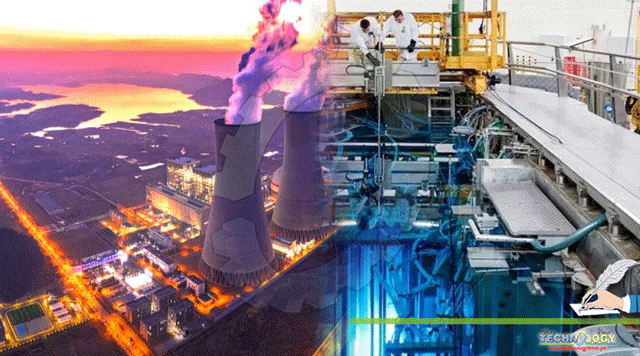Chinese scientists have developed the world’s first commercial thorium-fuelled reactor that does not use water for cooling. This is a significant advance in China’s electricity industry, which is currently reliant on coal-fired power facilities.

The Thorium Molten Salt Reactor is a project that started in 2011. According to the South China Morning Post, researchers are now working on a 2MW prototype, which is expected to be finished in August. The reactor may be built in the deserts and flatlands of central and western China, as it would not require construction near water. The reactor, which runs on thorium molten salt instead of uranium or plutonium, may reach temperatures of 1,000°C. The first consumer version, with a capacity of around 100MW, is expected to be operational in 2030.
Professor Yan Rui of the Shanghai Institute of Applied Physics said in a research report in the Chinese journal Nuclear Techniques, A molten salt reactor has the benefit of being multifunctional, compact in size, and extremely flexible. Small-scale molten salt reactors have gotten a lot of interest in recent years due to their potential.
The first commercial reactor will be built in Wuwei, a desert region in western China, and the Chinese government wants to build up to 30 more in nations participating in China’s “Belt and Road” project, a worldwide investment program in which China would invest in the infrastructure of 70 countries.
In the Molten salt reactor, thorium is dissolved in fluoride salt and then it is transferred into the reactor chamber at a high temperature of 600 . When thorium atoms are hit with high-energy neutrons, they convert into U-233, a uranium isotope that may split, the energy released, and even more neutrons in a reaction known as nuclear fission. This initiates a chain reaction, which releases heat into the thorium-salt solution, which is then transferred through a second chamber, where the surplus energy is recovered and converted into electricity.
Thorium, a silvery radioactive metal named after the Norse god of thunder, is considerably cheaper and more plentiful than uranium, but it can’t be used to make nuclear bombs. Nuclear physicists have long been intrigued by thorium reactors. The thorium-232, isotope utilized in nuclear reactions and is located in the periodic table left of U-235. In comparison, fissile uranium-235, which is utilized in conventional nuclear reactors, accounts for only 0.72 percent of total mined uranium. As a result, thorium becomes a far more plentiful energy source.
There are several benefits to using thorium instead of uranium or plutonium. It will be less radioactive and since the thorium fuel is in the liquid state, and will freeze, containing any environmental harm. Because the element can’t be used to build nuclear bombs, it would also construct the design easier to transfer. The benefits of thorium aren’t limited to that. The waste materials of uranium-235 nuclear reactions are extremely radioactive and contain plutonium-239, which is used in nuclear bombs. Traditional nuclear waste must be stored in lead containers, segregated in secure locations, and subjected to stringent controls to avoid falling into the hands of the wrong people. On the other hand, the primary byproducts of a thorium nuclear chain reaction are uranium-233, which can be reprocessed in subsequent reactions.
However Initial research, on the other hand, tried to find a solution to issues such as the corrosion and fracturing of pipes used to carry molten salts. China’s project is the most advanced of many new attempts to produce thorium reactors, such as one called Natrium, which aims to create a prototype plant in Wyoming and has Bill Gates and Warren Buffett’s financial backing. China is also developing massive hydroelectric dams to fulfill its energy needs, in addition to its nuclear reactors. It turned on its Baihetan dam in 2021, which has the world’s biggest capacity hydropower turbines, each rated at 1GW. The new molten salt reactors are viewed as critical to China’s goal of being carbon-neutral by 2060.